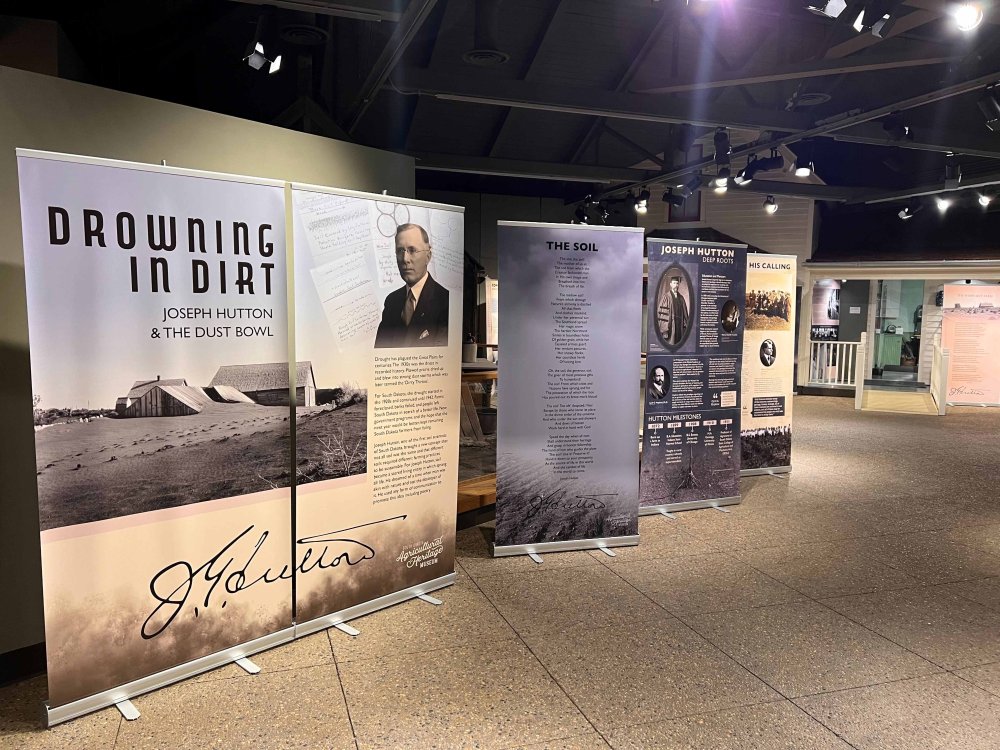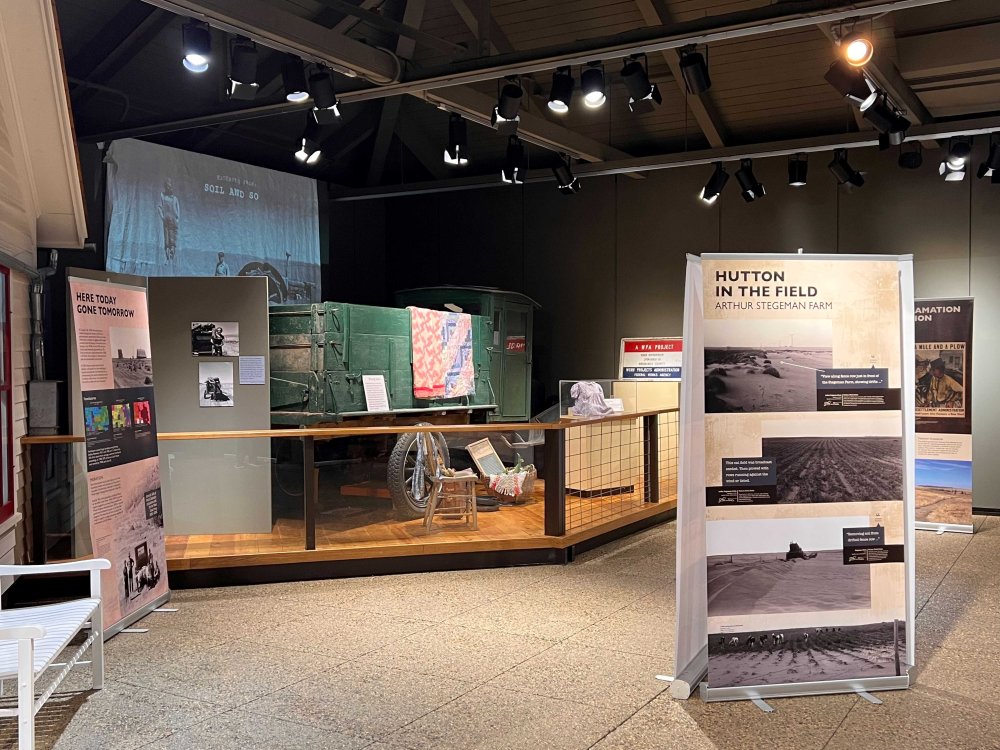Joseph Hutton, one of the first soil scientists of South Dakota, brought a new concept to the state that not all soil was the same and that different soils required different farming practices to be sustainable. Since his arrival in 1911, Hutton studied the effects of the farming practices of the day depleted the soil nutrients and caused erosion. He predicted the Dust Bowl 20 years before. For Joseph Hutton, soil became a sacred living entity in which sprang all life. He dreamed of a time when man was akin with nature and not the destroyer of it. He used any form of communication to promote this idea including poetry, radio and public speeches.
This exhibit was also made possible in part due to a grant from the South Dakota Humanities Council, an affiliate program of the National Endowment for the Humanities. The exhibit will be on display from February 2023 – Fall 2024. This exhibit will then be available for rent in 2025.
Researchers: Dr. Donald Berg, Dr. Thomas Schumacher, Dr. Dale Potts, Dr. Doug Malo, Carrie Van Buren, Gwen McCausland and Leo Mullen.
This is film is a companion piece to the article “The Life and Death of 470 Acres” also written by Robert Lusk. Here we have a Huron, South Dakota newspaper editor and publisher shooting an expensive color motion picture in 1938. The story address the early prosperity of a specific farm followed by drought, depression, dust storm and a bankruptcy proceeded by a determined conservation effort of complete reclamation and productivity.



